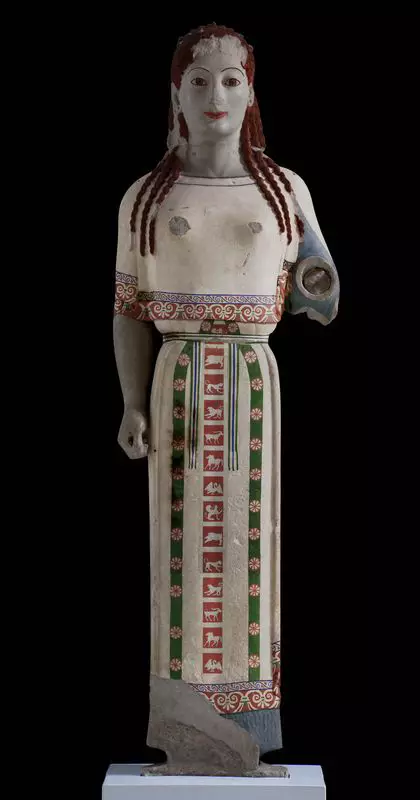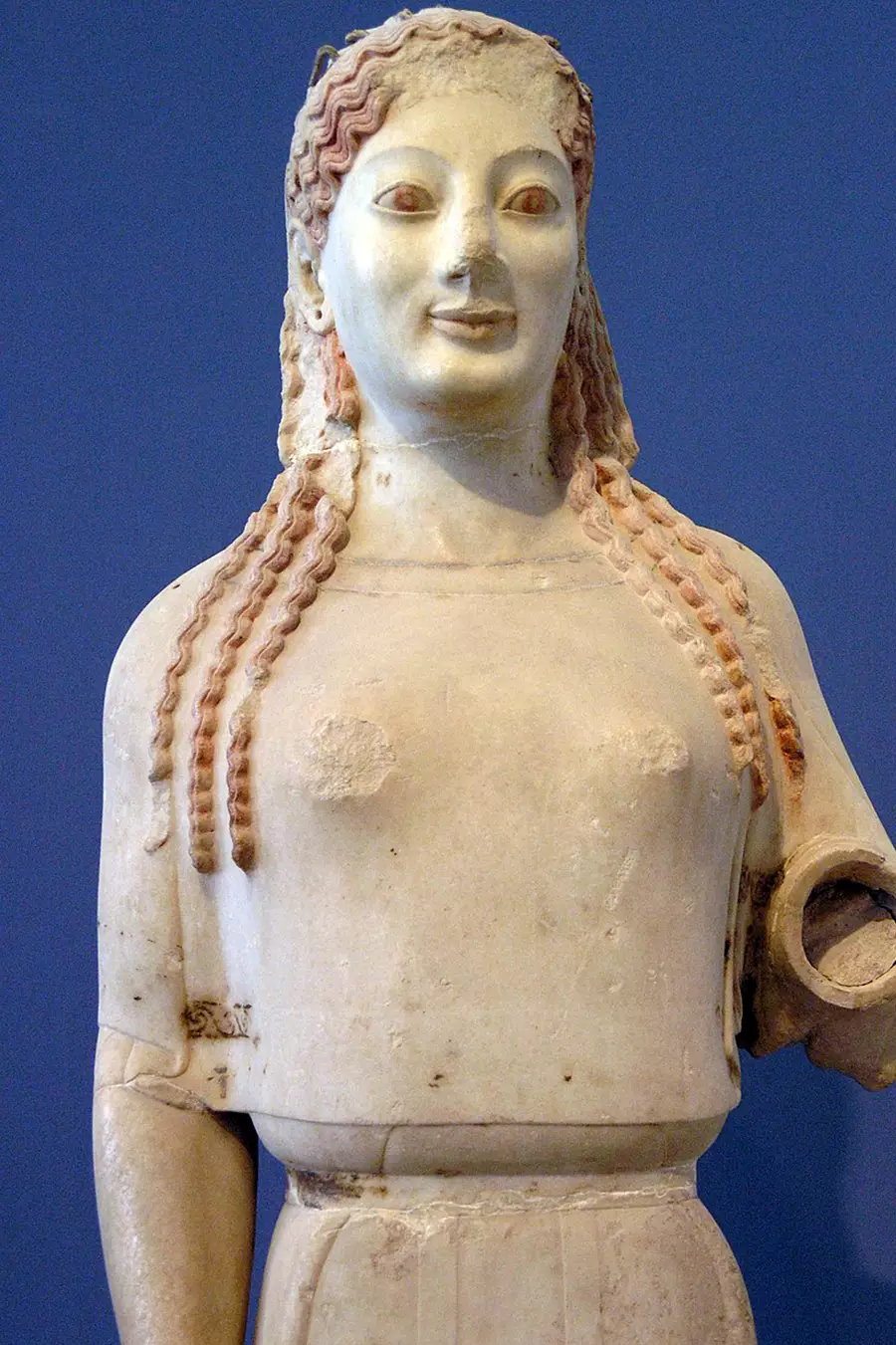What did kallos mean to the Greeks? Why Chania explores this concept in an effort to uncover divine, mortal, and internal beauty in the Greek world. The ancient Greek word Kallos basically means beauty and is associated with both the female and the male gender.
However, the concept of Kallos in its ultimate dimension is not just a word signifying merely beauty. It is an ideal that was developed in ancient Greek thought, was expressed through the poems of the epic (8th century BC) and the lyric (7th – 6th century BC) poets, and from the fifth/fourth century BC onward was formulated gradually in the speaks of philosophers. They describe it as an amalgamation of the beauty of physical appearance with the virtues and assets of the soul.
Table of Contents
An Introduction to Kallos
The reason this word is so important is that it transcends aesthetics and encompasses our sense of pleasure, happiness, well-being, and peace brought on by a particular sensory experience or observation.
The various translations of kallos include ‘upright, good, beautiful, noble’, which in part is because it has two variations that have been intertwined over the years. American classicist, David Konstan, looked at the two variations on the word – kalós and kallos – to better understand the Ancient Greek concept of beauty, and said:
“When God created the world, he looked at the world and he said it is good. In Greek, that’s translated to the adjective kalós. God didn’t mean it’s beautiful, he meant it’s a fine piece of work […] Whereas kallos does, interestingly enough, have a corresponding word in Hebrew, which also refers very specifically to physical attractiveness as opposed to things being good in general.”
ALAN LIGHTMAN – AMERICAN PHYSICIST
The result is a word continues to permeate languages around the world and is at the root of words that we use commonly (and uncommonly) in language today. For example:
• Calligraphy: from kalligraphos ‘person who writes beautifully’
• Calisthenics: exercises to achieve bodily fitness and grace (beautiful strength)
• Calligynephobia: the extreme fear of beautiful women
Visual Experience and Satisfaction
This perception of beauty was perhaps most obvious in Greek sculpture and artworks, where beauty was created through symmetry and proportion. These are elements in design that we continue to value. Why? Human beings have been shown to be instinctively drawn to them, finding symmetry soothing and calming.
American scientist Alan Lightman told the BBC:
“The reason must be partly psychological […] Symmetry represents order, and we crave order in this strange universe we find ourselves in… [It] helps us make sense of the world around us.”
In a study titled The Impacts of Symmetry in Architecture and Urbanism, it quotes Semir Zeki, Professor of Neuroaesthetics at University College London, from his book Beauty in Architecture: Not a Luxury—Only a Necessity:
“Beauty is a neurological requirement of healthy brains: “In our daily activity, we search for and seek to satisfy that quality; in simpler terms, we seek the beautiful to nourish the emotional brain since, from a neurobiological point of view, all areas of the brain must be continually nourished in a way that corresponds to their specific functions…
Semir Zeki – Professor of Neuroaesthetics at University College London
Hence, whatever other demands go into architectural design, beauty must be a central element. Its experience adds to the health of its individuals and thus to society’s wellbeing. It is not a luxury, but an essential ingredient in nourishing the emotional brain.


The Peplos Kore is one of the most well-known and popular pieces of Archaic Greek art. Peplos refers to the type of robe or shawl-like fabric draped over the figure, and Kore means a girl or young female. This white marble statue stands 1.17 cm high, was made around 530 BC and was originally colorfully painted.
The figure was found, in three pieces, in an 1886 excavation near the Erechtheion on the Acropolis of Athens. Historians and archaeologists debate whether this status is part of the Kori tradition of a mortal girl or a goddess. Her eyes are focused on a distant object, and her smile is referred to as the “archaic smile.” The body is sculpted in the round; however, only the front of the body displays fine detail.
“Human beings, with their highly evolved capacities of perception, can detect these symmetries, and sense the biologically relevant characteristics of the processes that formed them (healthy, beneficial, dangerous, etc). Once again it is clear that the perception of symmetry is biologically useful.”
CHRISTOPHER ALEXANDER – British-American architect
Other Archaic sculptures, kouroi (meaning ‘youths’), stand as symbols of kalokagathia (beauty and goodness). The ideal for ancient Greeks is to be kalos kagathos, beautiful and good. One of the first to express this idea was the lyric poet Sappho (late 7th/early 6th century BC), who is seen composing a poem on one vase, minute letters just visible. In one of her surviving fragments (50), she writes, ‘for he that is beautiful is beautiful as far as appearance goes, while he that is good will also consequently be beautiful’.
These kouroi are standing, nude sculptures of young men. Their female counterparts are clothed korai, also embodying youthful beauty immortalized in stone. A number of these korai have been found at the Acropolis and once held doves, fruit, or flowers in their hands as offerings to the goddess Athena.


Kallos in Gods, Nymphs & Myths
Beauty always derives from the gods, who possess it to the absolute degree. Even the most beautiful mortals are considered equal in beauty to the gods and are never superior to them. Also, each god has his own feature in Greek mythology and is attributed with it to the works of antiquity: Zeus the magnificence, Hera the solemnity, Aphrodite the beauty of the face and body, Athena the wisdom, Ares the vigor, Poseidon the power of nature, Apollo the serenity, Artemis the austerity.
Nymphs, on the other hand, are different from Greek goddesses and generally regarded as personifications of nature, are typically tied to a specific place or landform, and are usually depicted as beautiful maidens. They were not necessarily immortal but lived much longer than humans.

Kallos of Mortals
Kallos thrives and declines with age. Beauty withers away and strength gives way to weakness. However, according to ancient Greek thought, the kallos of humans is inherent in every age, and thanks to this, many mortals became immortal. Such examples are mythical and real figures of antiquity, well-known for their natural beauty, like Adonis or Helen of Troy on the one hand, and Alexander the Great on the other.
Xenophon reflects this perception, saying that “we should not underestimate kallos because it disappears quickly. Because as we recognize beauty in a boy, so we do in a teenager, an adult or an elderly person.” Similarly, Aristotle, who states that “beauty is different from age to age.”
The praise of the natural beauty of young people, men and women of everyday life in ancient Greece by their contemporaries is given through inscriptions engraved on vases or written in color on stone architectural members, etc.

Kallos in Sports
The athletic kallos is about the physical and mental strength and vigor that makes humans capable of coping with the hardships and demands of the competitions, in combination with their noble rivalry and their wonderful achievements in the stadium.

Image Credits: Carole Raddato

Epilogue
For those who live long enough, no matter if you are an archetype of heroic kallos carrying out deeds to show off your strength and to help others, you will face old age. In one vase-painting Heracles – beloved hero of the ancient world, skin of the Nemean lion adorning him – is confronted by old age, withered and crouched over a staff. Even the most beautiful will become old.
What should we consider beautiful, then? For Sappho (Fragment 16), though some may think masses of ships, horsemen, or warriors the most beautiful, the most beautiful thing in the world is quite simply whatever you love best.
Related Read:
Kallos: The Ancient Greek Ideal for Beauty.
Kallos: eternal beauty.






